As I may have mentioned previously, my formal college education is related to the print industry and even though my work is all web design nowadays I still have a keen interest in print. I collect odd printed material and I have a collection of Irish books which were typeset in the same 'Gaelic' typeface designed for the Gaelic (Irish) language (Link to Wikipedia page on Irish type- a great resource for information relating to Irish type). I do not know who designed it but I do know that the Monotype foundry published it. I have an old Riscatype typeface catalogue from the 1950s which has a sample of the typeface, seen below, alongside some Russian Cyrillic text.
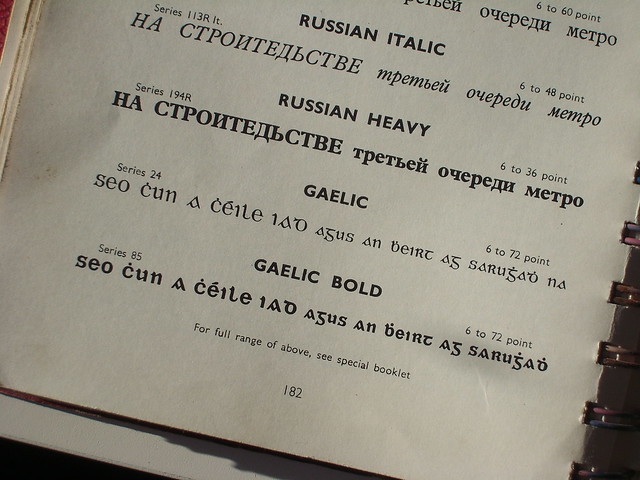
The typeface was cut as ‘Gaelic’ Monotype Series 24 A, created in 1906. Monotype Imaging’s website has a note for 1903 “First Irish font cut as Gaelic, Series 24.” A digital version was created in 1993 by Michael Everson and was titled ‘Duibhlinn’. Duibhlinn can be seen here on myfonts.com.
The form of the characters is similar to the uncial script seen in manuscripts such as the Book of Kells- the influence is there. In my opinion though, it looks like the original 1903 script was modelled on a piece of Irish text, and when it came to fulfilling the entire 26 character alphabet (the Irish language doesn’t use letters such as j, k, w, x, y, z), the designer simply mangled other characters to fill in the missing gaps. It reminds me of Jurassic Park where they put frog DNA into a dinosaur DNA strand, it works to a degree but then things go horribly wrong. In this case, the letter shapes don’t start breeding amongst themselves, but they do produce some horrific disjointed aesthetics.
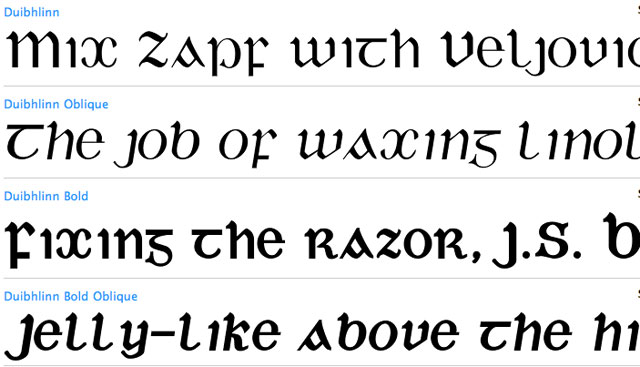
I would love to, at some point in the future, develop a proper Irish typeface, using the classic Gaelic character shapes, but with more aesthetically pleasing proportions and better character interaction.
In a former life, I created a couple of Irish script typefaces, based on the characters from the Book of Durrow, but they were thick uncial characters, best suited for display work. I want to create an actual body-copy typeface, a Gaelic-Times-New-Roman. I think there would be a market for it, allowing for an Irish theme without it affecting legibility. Linotype have a good contender but their uppercase characters are a bit goofy.
I guess I’ll just add ‘New Gaelic Typeface’ to my ever growing to-do list. If you have any further information or suggestions for good Gaelic typefaces, please let me know and I'll post a follow-up.
 In school, when we progressed beyond the workbooks with the cute graphics, we moved on to writing and doing maths in copybooks, or as we called them, copies.
In school, when we progressed beyond the workbooks with the cute graphics, we moved on to writing and doing maths in copybooks, or as we called them, copies.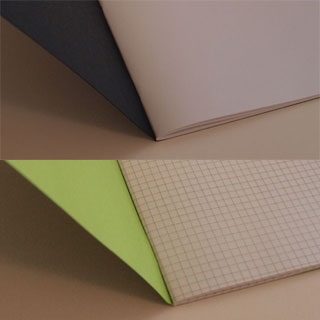
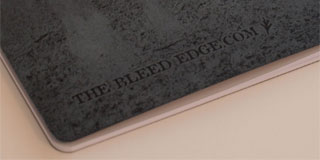 For extra fun, I printed the covers in an opaque silver ink (don’t worry, it’s a soy-based ink) with the image used on the masthead for this site. I think it provides an interesting texture to the book. I also put a little Bleed Edge leaf on the front and
For extra fun, I printed the covers in an opaque silver ink (don’t worry, it’s a soy-based ink) with the image used on the masthead for this site. I think it provides an interesting texture to the book. I also put a little Bleed Edge leaf on the front and 
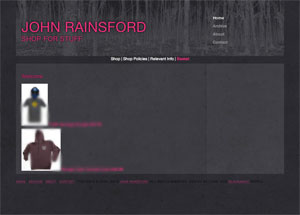 The genesis of the shop utilised the basic design on this site but I chose an electric pink instead of the green- I don’t often get to use pink so I was definitely taking this opportunity! Half way through the project, I launched the revamped version of this blog, so I took stock of progress on the shop, and realised that if I left it as an add-on of this site, I’d be limited, in terms of branding, and products I could sell. For example, I am planning on selling products, like tshirts, for my company
The genesis of the shop utilised the basic design on this site but I chose an electric pink instead of the green- I don’t often get to use pink so I was definitely taking this opportunity! Half way through the project, I launched the revamped version of this blog, so I took stock of progress on the shop, and realised that if I left it as an add-on of this site, I’d be limited, in terms of branding, and products I could sell. For example, I am planning on selling products, like tshirts, for my company 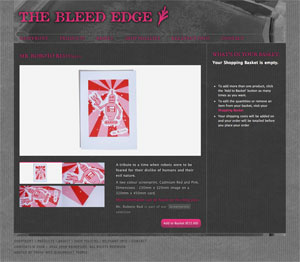 On other shopping carts, the postage is worked out by weight, so I developed a way of distinguishing the shipping method, for each product, so if someone orders a product that’ll ship in a tube and one that ships in an envelope, they get charged an appropriate shipping fee for both. The shipping works out a bit more expensive if this situation arises, but it’s preferable to trying to ship the two together, which wouldn’t work.
On other shopping carts, the postage is worked out by weight, so I developed a way of distinguishing the shipping method, for each product, so if someone orders a product that’ll ship in a tube and one that ships in an envelope, they get charged an appropriate shipping fee for both. The shipping works out a bit more expensive if this situation arises, but it’s preferable to trying to ship the two together, which wouldn’t work.